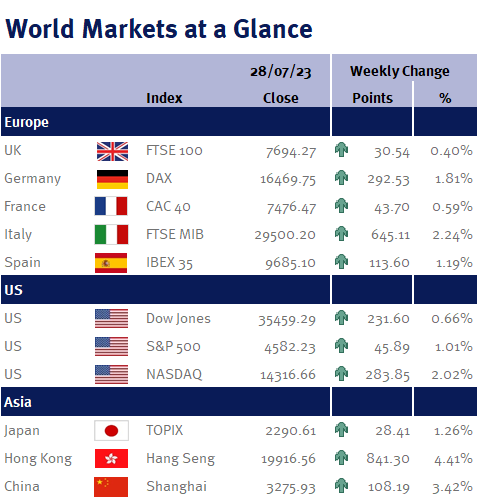This week, the focus in the markets was squarely on the key policy decisions from the Federal Reserve (Fed), the European Central Bank (ECB), and the Bank of Japan (BOJ). As widely expected, the Fed and ECB raised interest rates by 25 basis points.
On Wednesday the Fed raised rates taking them to 5.25% – 5.5% despite inflation now standing close to the 2% target at 3%. Fed chair Jerome Powell didn’t appear to change his tune and maintained the long-holding data-dependent stance. While policymakers had previously suggested the possibility of two more rate increases this year during the June meeting, markets have priced in a higher probability that there will be no further rate adjustments for the remainder of the year.
Jay Powell acknowledged that inflation had moderated somewhat since the middle of the last year and that policy was “putting downward pressure on economic growth and inflation”, keeping the possibility open for maintaining interest rates at their current level during the Fed’s next meeting in September, which will be good news for bond and equity markets. There were further signs of cooling inflation in the US after the Core PCE Price Index, the Fed’s preferred measure of inflation, arrived at 4.1% on year in June, down from 4.6% in May and below the market forecast of 4.2%.


